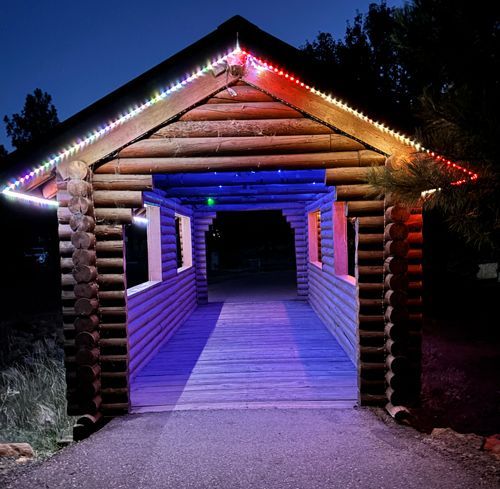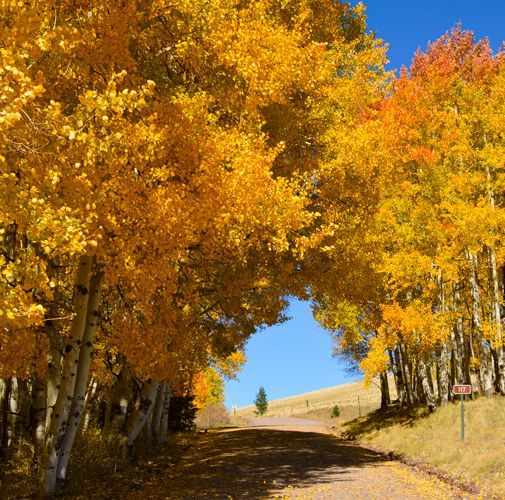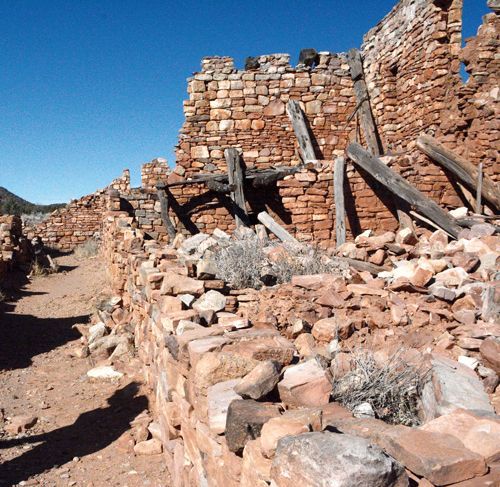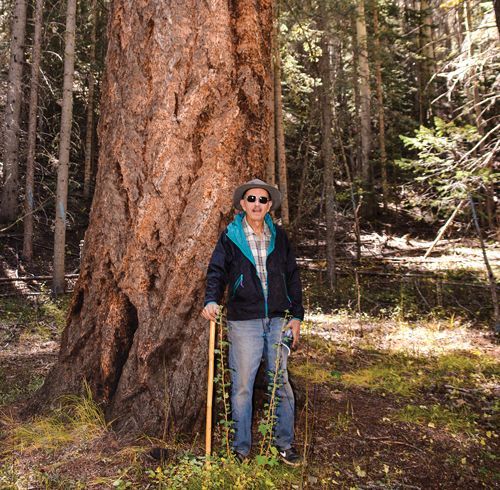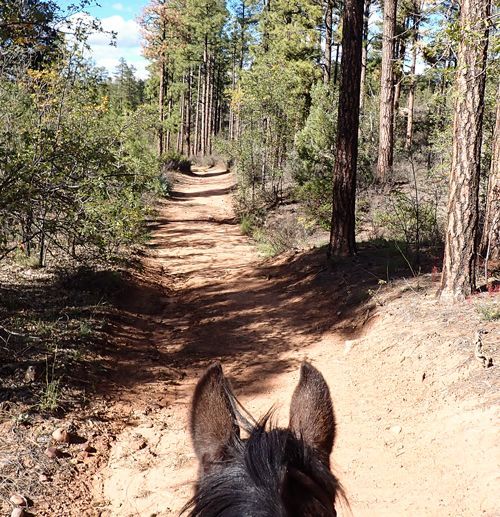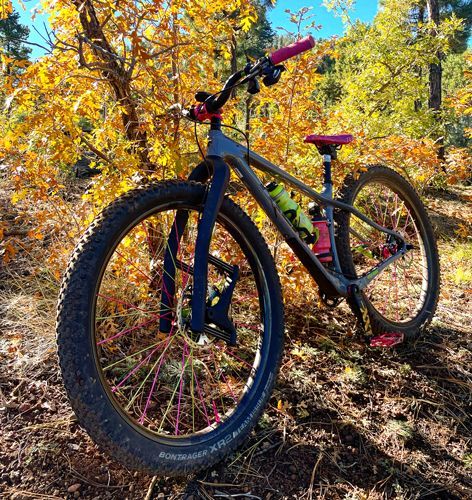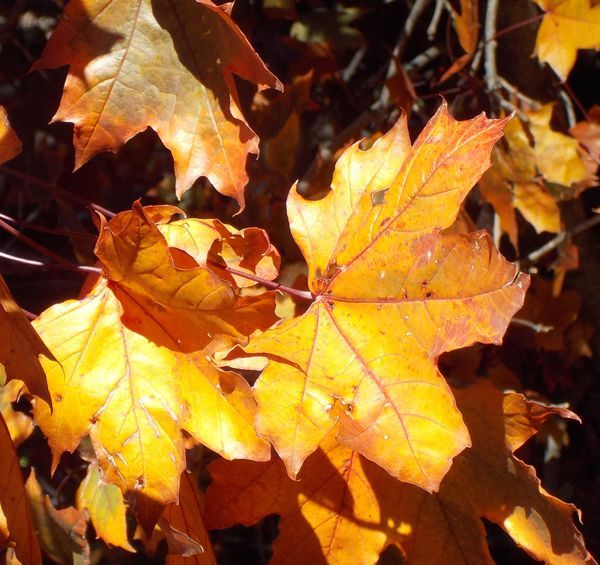Remains of an old west army camp
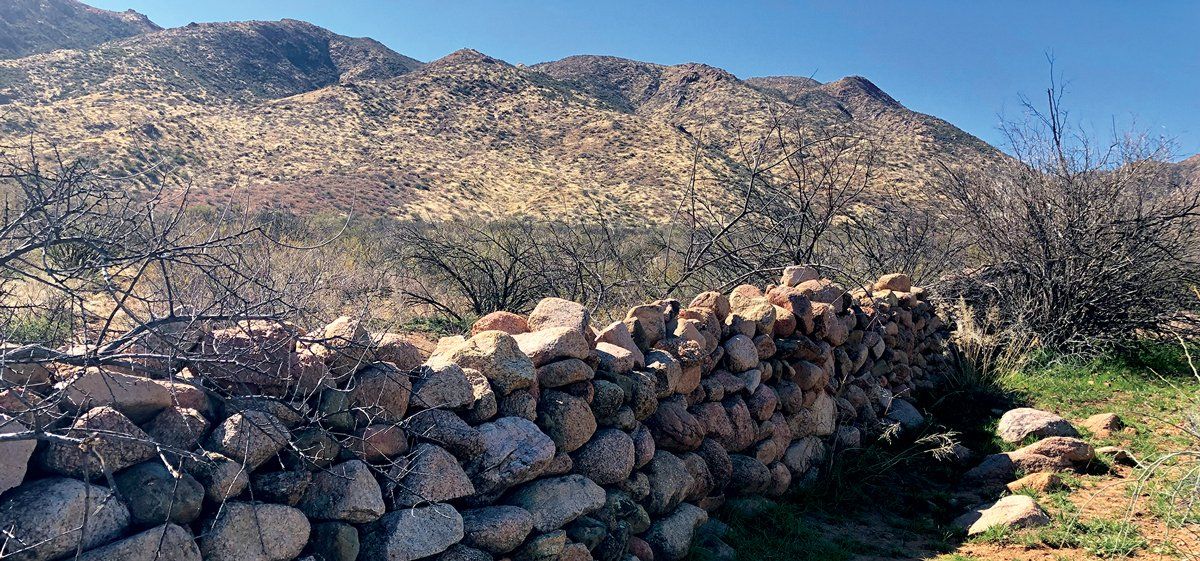
By: Sherry E Engler
As the breeze blows softly, tugging slightly on the desert vegetation of mesquites and catclaw, disparaging whispers of historical voices seem to call to me from the past, reverberating a lonely and dangerous existence of the small United States military fort of 1868, Camp Reno. Located on the desert basin floor, on the eastern side of Mount Ord, only slight traces of what once was a hopeful military fort site exists, a wall of river rock, approximately four feet tall, running approximately 220 yards, built by the weary. The beginnings of the protective wall were feasibly started in 1867 to be completed in 1868.
The voices call to me in anguish. Many perhaps perished in the harsh desolate environment, physically succumbing for eternity; yet those who survived were perchance mentally scarred from what might have been a very unforgiving existence, perhaps hellish in the Arizona heat and punitive elements, always on guard, in a paranoid state as to what demises might lie in the future. The soldiers of Camp Reno were truly subjected to an isolated, dangerous reality until the outpost was abandoned in 1870.
The beginnings of Camp Reno started as a calculation of securing and protecting travel for the military troops through Tonto Basin. As western conflicts increased between settlers from the east and Native Americans, tensions began running high for both. Securing water and protection were imperative in 1867. The calculation for the military was to secure an outpost from Fort McDowell, through the Mazatzal Mountain Range, forging a primitive road of travel to connect Tonto Basin. Thus, Camp Reno was that calculated relief that appeared stronger in the beginning than two and a half years later when the post was abandoned.
As stated earlier, securing water in the dry, arid Arizona desert was an absolute must for survival in the 1860’s. Many speculations have been made as to the abundance of year-round water sources in this time of history versus what are now seasonal water sources. Thus, in 1868, was Reno Creek a year-round water source? Today it is more a seasonal water source. Questions plague me regarding the consistent flow of Reno Creek then and today. However, the creek was moderately running with clear, fresh mountain water during my visit that day, and my imagination heard the military voices of yesterday sigh with relief, too, for themselves and their livestock as the water of Reno Creek ripples, flowing east toward Tonto Creek.
Watching the sunlight dance happily in the water ripples, hearing the soft sounds of the creek breaking softly in the desert stream portrays a peaceful calm that isn’t a portrayal of the reality of a yesteryear’s extreme conditions in the mid to late 1800’s. In the near distance is the trace of an era left behind, the wall standing today as evidence of hard labor, enduring sweat, and difficult challenges to build a protective, military rock wall. It is a creative testament to the tenacity of young men, working in unison to stack hundreds of rounded, tumbled creek boulders into the formation of a protective structure.
According to some documentation, Camp Reno was so dangerous that military garrisons were on a rotation basis of switching out every thirty days. Originally projected to be a meeting place, not only for military purposes, but to serve as a place to negotiate peace talks with the Tonto Apaches and other Native American tribes, Camp Reno failed this expectation. One notation of this failure was when Del Shay, an Apache leader, was shot two different times as he tried approaching Camp Reno. However, according to history, Del Shay did not give up and continued to visit Camp Reno in hopes of negotiations. Standing by the remnant wall, I close my eyes to hear the distant historic mutters raging in the desert wind of disappointment, agony, and disillusionment.
Perhaps because of danger and the weight and costs associated with maintaining the small fort, Camp Reno sadly perished, as did the namesake for which it was named. Camp Reno was named after Major General Jesse Lee Reno of the Union Army, who was killed September 13, 1862, at the Civil War battle of South Mountain in Maryland by a Confederate sharpshooter. Eight years later, Camp Reno, named in his honor, also succumbed to the fate of military woes.
Visiting Camp Reno is an unforgettable experience, almost unbelievable when viewing the legacy of a historical era in the southwest desert at the base of Mount Ord. To reach the destination from Payson, travel south on State Highway 87, turn left on State Highway 188. At the southern end of Tonto Basin, turn right on FR409, which will lead you to an old wooden sign, dilapidated with age, depicting the area of the fort, lost in time except for the constructed river boulder wall, standing strong from decades ago.
Caution! FR409 is somewhat primitive. A four-wheel-drive vehicle, a side by side, or a four-wheeler may be the best modes of transportation; however, if you are in a hiking mood, please remember to take plenty of water and some snacks. As always, please advise someone of your plans and a time to expect your return. And always, be aware of your surroundings. Rattlesnakes are already out. On February 12, 2022, the same day we visited Camp Reno, I found a rattlesnake, basking in the sun, a few miles to the northeast. No matter the time of year, it is always wise to be cautious.
From our house to yours, may your explorations be safe, happy ones; and may the luck of the Irish on St. Patrick’s Day be with you forever. Oh, and by the way, if you heard a sonic boom scream on February 12, 2022, that wasn’t a historic voice of yesteryear. That was me when I found the rattlesnake. Blessings!

